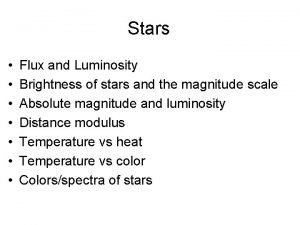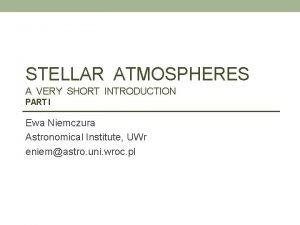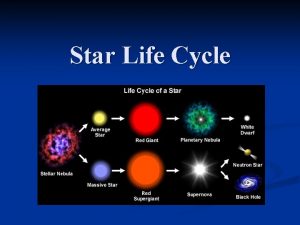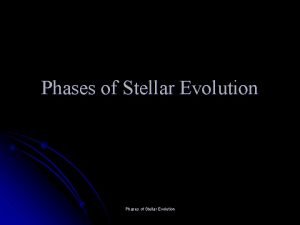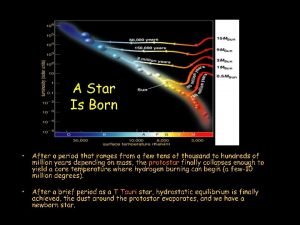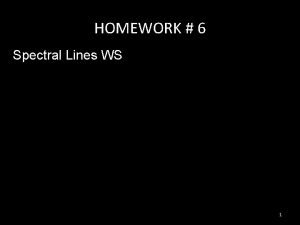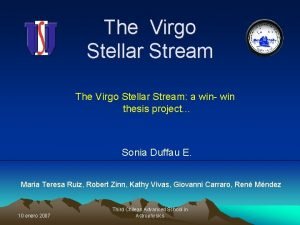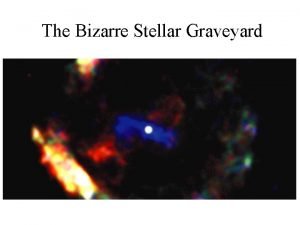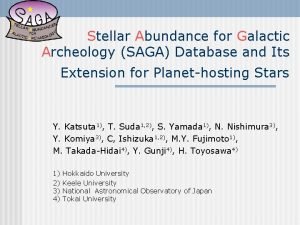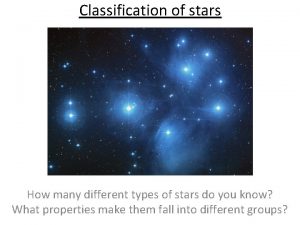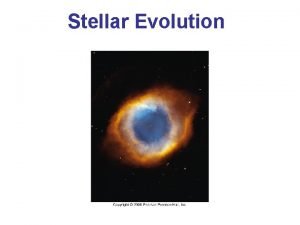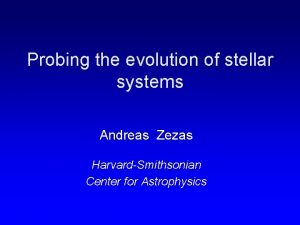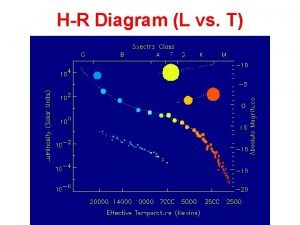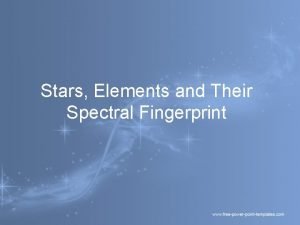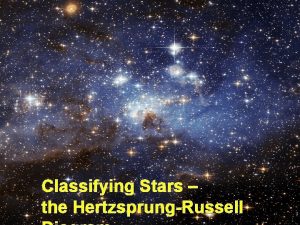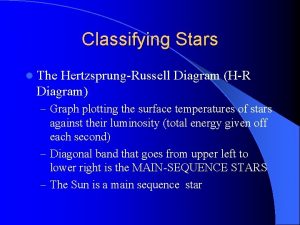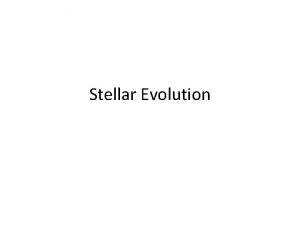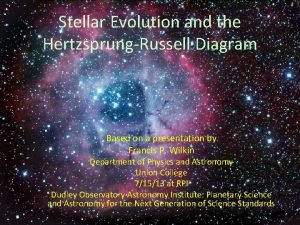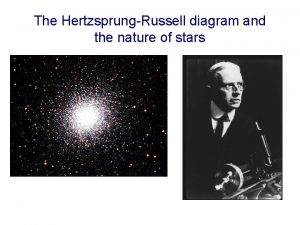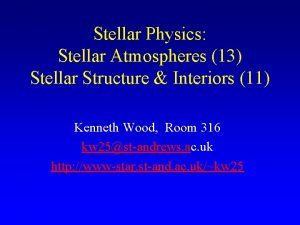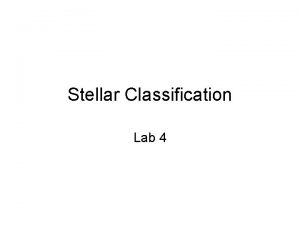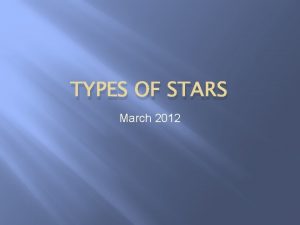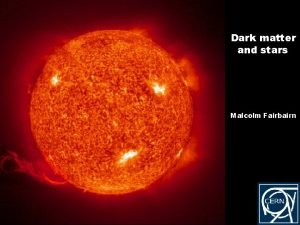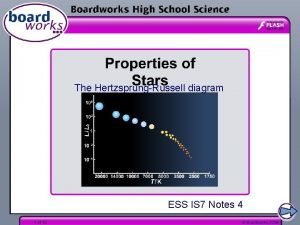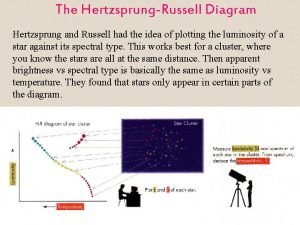The HertzsprungRussell Diagram Stellar Classification Spectral Types Stars



















- Slides: 19

The Hertzsprung-Russell Diagram

Stellar Classification: Spectral Types * Stars classified according to appearance of spectrum. * Originally believed differences due to composition – Not! 40, 000 K O 3000 K B A F G Temperature K B 0, B 1, B 2, . . . , B 9, A 0, A 1, . . . M

Sun: G 2 p. 258

The Hertzsprung-Russell (HR) Diagram * E. Hertzsprung & H. N. Russell (1911 - 13) * Result of seeking correlations between observable properties of stars. * Correlates luminosity (or absolute magnitude) and temperature (or spectral type).

* “Scoop out” a representative sample of stars – how do they arrange themselves in terms of luminosity and temperature? Supergiants Giants Main Sequence White Dwarfs

For ~ 41, 400 stars near the sun. * Overall, we find: 90% of stars lie on Main Sequence. L 1% of stars are Giants & Supergiants. 9% of stars are White Dwarfs. T

* Giants & supergiants are actually big; white dwarfs are small. . . G 2 Supergiant G 2 Giant L Sun (G 2) G 2 stars: * All have same temp. * But luminosities differ. . . T. . . So radii must differ! Eh?

B 8 supergiant B 8 main sequence star Luminosity Class: I: Supergiants II: Bright Giants III: Giants IV: Subgiants V: Main sequence

Rigel (B 8 Ia) Betelgeuse (M 2 Ia) Aldebaran (K 5 III) Sirius (A 1 V) Sun (G 2 V) Proxima Centauri (M 5 V) p. 266

The Mass-Luminosity Relation

Masses of Main Sequence Stars 100 (Sun’s mass = 1) L p. 271 0. 08 Temp

Mass-Luminosity Relation for Main Sequence Stars L M 3. 5 L Small change in mass results in large change in luminosity. p. 271 Mass

What is the luminosity (relative to the sun) of a star 3 times more massive than the sun? L M 3. 5 L = 33. 5 47 This star is 47 times more luminous than the sun!

Summary of Stellar Properties (All stars on HR diagram) Temperature 2500 – 50, 000 K Luminosity 0. 001 – 1, 000 L Mass 0. 08 – 100 M Radius 0. 01 – 1000 R

A final word about the stars in the night sky: * Majority of stars in the galaxy are low-luminosity cool stars (“red dwarfs”) Most nearby stars are red dwarfs. * All red dwarfs in the night sky are invisible to the naked eye! * Night sky dominated by distant (& relatively rare) high-luminosity stars.


Stars within 12 light years of the Sun

60 ly

. 700 ly (!)
 Flux luminosity equation
Flux luminosity equation Schnauzer dogs there are three sizes
Schnauzer dogs there are three sizes Spectral classification
Spectral classification Stellar evolution diagram
Stellar evolution diagram Zero age main sequence
Zero age main sequence Hr diagram
Hr diagram Bright-line spectra worksheet answers
Bright-line spectra worksheet answers Stellar heaven
Stellar heaven Mizar luminosity
Mizar luminosity Stellar motion matlab
Stellar motion matlab Virgo stellar
Virgo stellar Masses in the stellar graveyard
Masses in the stellar graveyard Life cycle of a star poster
Life cycle of a star poster Iptv hosting
Iptv hosting Stellar assessment
Stellar assessment Stellar saga
Stellar saga What is stellar parallax?
What is stellar parallax? Stellar evolution
Stellar evolution Stellar
Stellar Stellar formation
Stellar formation
